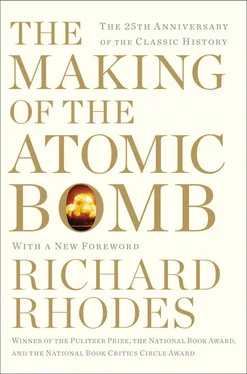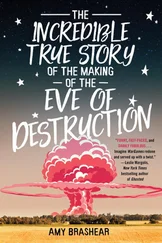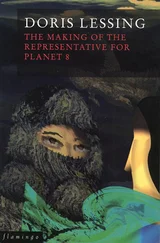Another, oddly similar invention, also patented, might have won Szilard world acclaim if he had taken it beyond the patent stage. Independently of the American experimental physicist Ernest O. Lawrence and at least three months earlier, Szilard worked out the basic principle and general design of what came to be called, as Lawrence’s invention, the cyclotron, a device for accelerating nuclear particles in a circular magnetic field, a sort of nuclear pump. Szilard applied for a patent on his device on January 5, 1929; Lawrence first thought of the cyclotron on about April 1, 1929, producing a small working model a year later—for which he won the 1939 Nobel Prize in Physics. 48, 49
Szilard’s originality stopped at no waterline. Somewhere along the way from sixteen-year-old prophet of the fate of nations to thirty-one-year-old open conspirer negotiating publishing rights with H. G. Wells, he conceived an Open Conspiracy of his own. He dated his social invention from “the mid-twenties in Germany.” If so, then he went to see Wells in 1929 as much from enthusiasm for the Englishman’s perspicacity as for his vision. 50C. P. Snow, the British physicist and novelist, writes of Leo Szilard that he “had a temperament uncommon anywhere, maybe a little less uncommon among major scientists. 51He had a powerful ego and invulnerable egocentricity: but he projected the force of that personality outward, with beneficent intention toward his fellow creatures. In that sense, he had a family resemblance to Einstein on a reduced scale.” Beneficent intention in this instance is a document proposing a new organization: Der Bund —the order, the confederacy, or, more simply, the band. 52
The Bund, Szilard writes, would be “a closely knit group of people whose inner bond is pervaded by a religious and scientific spirit”: 53
If we possessed a magical spell with which to recognize the “best” individuals of the rising generation at an early age… then we would be able to train them to independent thinking, and through education in close association we could create a spiritual leadership class with inner cohesion which would renew itself on its own. 54
Members of this class would not be awarded wealth or personal glory. To the contrary, they would be required to take on exceptional responsibilities, “burdens” that might “demonstrate their devotion.” It seemed to Szilard that such a group stood a good chance of influencing public affairs even if it had no formal structure or constitutional position. But there was also the possibility that it might “take over a more direct influence on public affairs as part of the political system, next to government and parliament, or in the place of government and parliament.” 55
“The Order,” Szilard wrote at a different time, “was not supposed to be something like a political party… but rather it was supposed to represent the state.” 56He saw representative democracy working itself out somehow within the cells of thirty to forty people that would form the mature political structure of the Bund. “Because of the method of selection [and education]… there would be a good chance that decisions at the top level would be reached by fair majorities.”
Szilard pursued one version or another of his Bund throughout his life. It appears as late as 1961, by then suitably disguised, in his popular story “The Voice of the Dolphins”: a tankful of dolphins at a “Vienna Institute” begin to impart their compelling wisdom to the world through their keepers and interpreters, who are U.S. and Russian scientists; the narrator slyly implies that the keepers may be the real source of wisdom, exploiting mankind’s fascination with superhuman saviors to save it. 57
A wild burst of optimism—or opportunism—energized Szilard in 1930 to organize a group of acquaintances, most of them young physicists, to begin the work of banding together. He was convinced in the mid-1920s that “the parliamentary form of democracy would not have a very long life in Germany” but he “thought that it might survive one or two generations.” Within five years he understood otherwise. 58, 59“I reached the conclusion something would go wrong in Germany… in 1930.” Hjalmar Schacht, the president of the German Reichsbank, meeting in Paris that year with a committee of economists called to decide how much Germany could pay in war reparations, announced that Germany could pay none at all unless its former colonies, stripped from it after the war, were returned. “This was such a striking statement to make that it caught my attention, and I concluded that if Hjalmar Schacht believed he could get away with this, things must be rather bad. I was so impressed by this that I wrote a letter to my bank and transferred every single penny I had out of Germany into Switzerland.” 60
A far more organized Bund was advancing to power in Germany with another and more primitive program to save the world. That program, set out arrogantly in an autobiographical book— Mein Kampf —would achieve a lengthy and bloody trial. Yet Szilard in the years ahead would lead a drive to assemble a Bund of sorts; submerged from view, working to more urgent and more immediate ends than utopia, that “closely knit group of people” would finally influence world events more enormously even than Nazism.
* * *
Sometime during the 1920s, a new field of research caught Szilard’s attention: nuclear physics, the study of the nucleus of the atom, where most of its mass—and therefore its energy—is concentrated. He was familiar with the long record of outstanding work in the general field of radioactivity of the German chemist Otto Hahn and the Austrian physicist Lise Meitner, who made a productive team at the Kaiser Wilhelm Institute for Chemistry. No doubt he was also alert as always to the peculiar tension in the air that signaled the possibility of new developments.
The nuclei of some light atoms could be shattered by bombarding them with atomic particles; that much the great British experimental physicist Ernest Rutherford had already demonstrated. Rutherford used one nucleus to bombard another, but since both nuclei were strongly positively charged, the bombarded nucleus repelled most attacks. Physicists were therefore looking for ways to accelerate particles to greater velocities, to force them past the nucleus’ electrical barrier. Szilard’s design of a cyclotron-like particle accelerator that could serve such a purpose indicates that he was thinking about nuclear physics as early as 1928.
Until 1932 he did no more than think. He had other work and nuclear physics was not yet sufficiently interesting to him. It became compelling in 1932. A discovery in physics opened the field to new possibilities while discoveries Szilard made in literature and utopianism opened his mind to new approaches to world salvation.
On February 27, 1932, in a letter to the British journal Nature , physicist James Chadwick of the Cavendish Laboratory at Cambridge University, Ernest Rutherford’s laboratory, announced the possible existence of a neutron. (He confirmed the neutron’s existence in a longer paper in the Proceedings of the Royal Society four months later, but Szilard would no more have doubted it at the time of Chadwick’s first cautious announcement than did Chadwick himself; like many scientific discoveries, it was obvious once it was demonstrated, and Szilard could repeat the demonstration in Berlin if he chose. 61, 62) The neutron, a particle with nearly the same mass as the positively charged proton that until 1932 was the sole certain component of the atomic nucleus, had no electric charge, which meant it could pass through the surrounding electrical barrier and enter into the nucleus. The neutron would open the atomic nucleus to examination. It might even be a way to force the nucleus to give up some of its enormous energy.
Читать дальше












